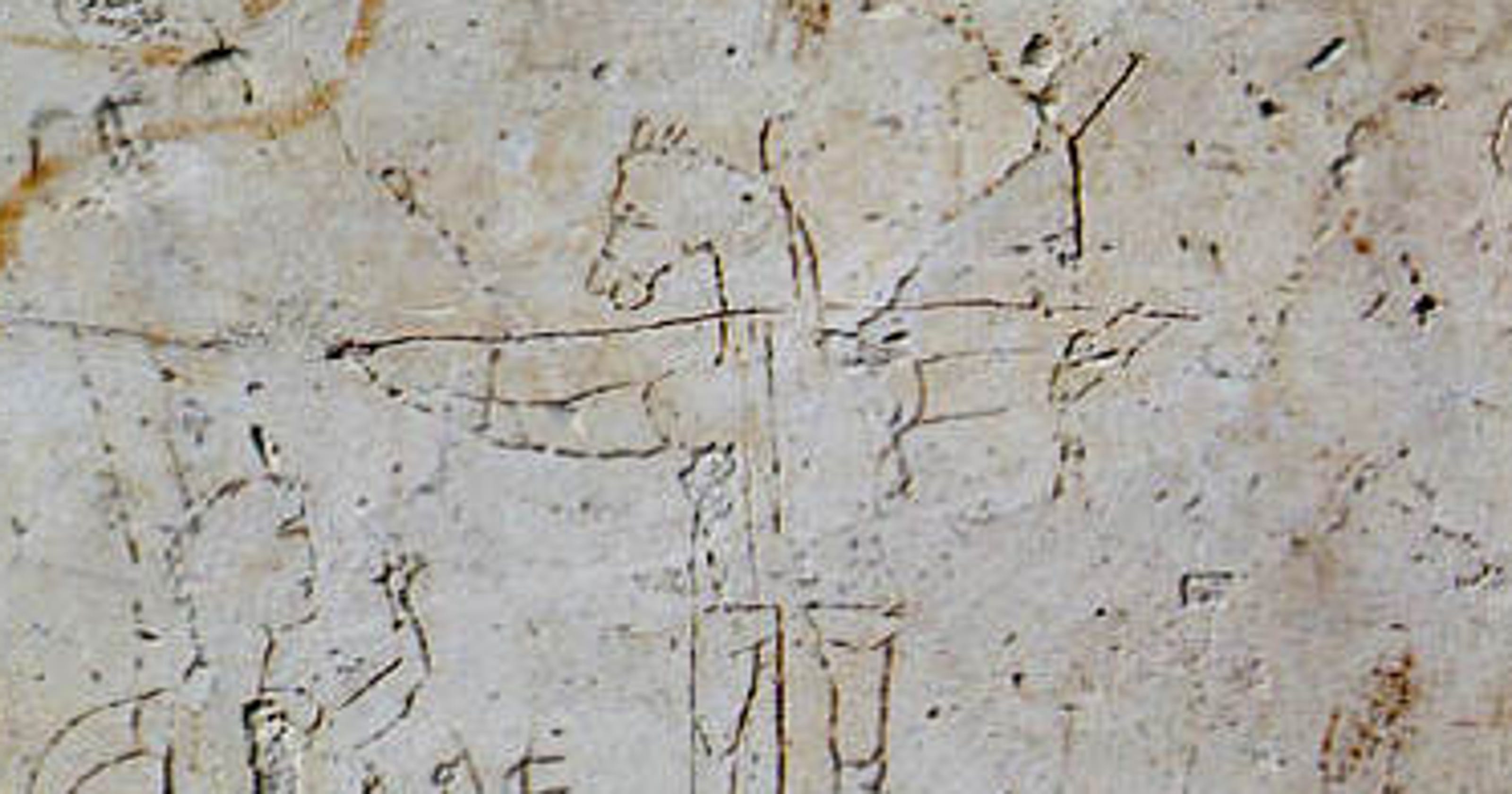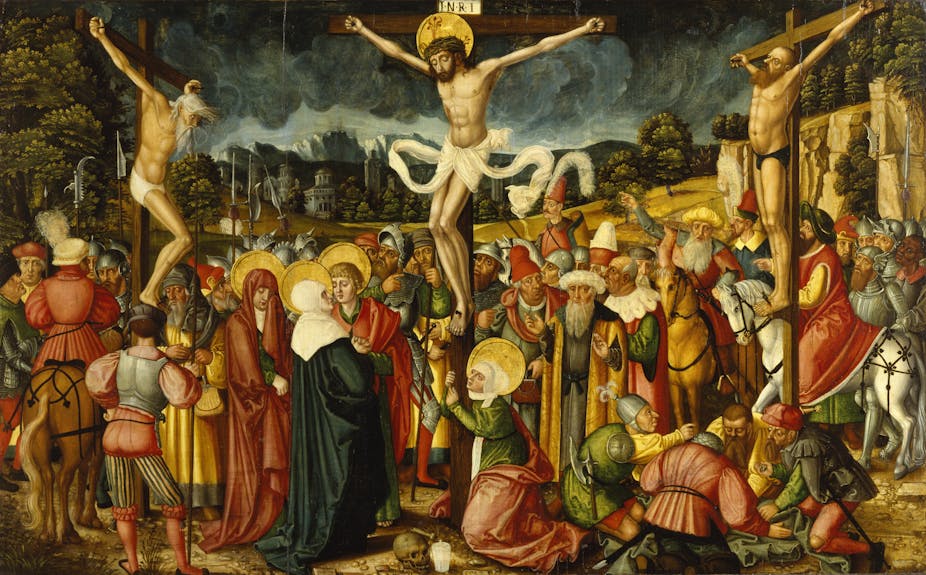Crude contempt at Christ on the Cross

The above graffiti found in Rome (A.D. 200–250) shows a man kneeling before a crucified figure with a donkey’s head. This is an example of the contempt shown toward the importance placed by Christians on Christ’s crucifixion.
The cross of Christ points to the violent death of Jesus by means of a heinous Roman method of execution reserved for slaves and enemies of the state. This central event, therefore, is at the same time the “scandal” (Gal 5:11) of the Christian faith.
Torturous executions of the ancient world had found their worst form in crucifixion. Josephus called it “the most wretched of deaths.”
Already in Jesus’ own ministry “bearing your cross” was a mark of discipleship (Mark 8:34; Matt 10:38; 16:24; Luke 9:23; 14:27) and seemed to mark a readiness to follow even unto death for Christ’s sake.

Jesus probably was stripped of all clothing and nailed to something like rough-hewn boards that would have elevated Him but a few feet once secured in the ground. This elevation, or lifting up, Jesus also anticipated, referring to it in His conversation with Nicodemus (John 3:14).
To the Jew, hanging was a sign of cursedness (Deut 21:23) and so the usefulness of the cross in God’s saving plan representing a turning around of the law and all the habits that had grown up around the law. To the Jews, the “word of the cross” (1 Cor 1:18) was a scandal and not to be believed (1 Cor 1:28). To the Greeks, it was madness and not to be believed (1 Cor 1:21). But to Paul, the cross of Christ was the power and wisdom of God and alone was to be preached about Christ in the world (1 Cor 2:2–5; see Gal 3:1).

In view of the victorious resurrection of Jesus, the cross now signifies atonement (Col 1:20; 2:4); unity of Jew and Gentile (Eph 2:16); baptism (Rom 6:3–11); self-denial of the believer (Phil 3:8); the believer’s self-identification with Christ and rejection of the world (Gal 2:20). Indeed, the living out of Christian faith has and must always see earthly existence through the cross of Christ.
If anything, the Christian “world view” is cruciform: Christians live in a suffering world and remind themselves that even the goods they may hold are perishing and often promote death (see 1 Cor 7:29–31). Christians at the same time are filled with joyful hope because Christ’s victory was already secure even while he hung upon His cross of suffering.
Dockery, D. S. (Ed.). (1992). Holman Bible Handbook (p. 688). Nashville, TN: Holman Bible Publishers.

